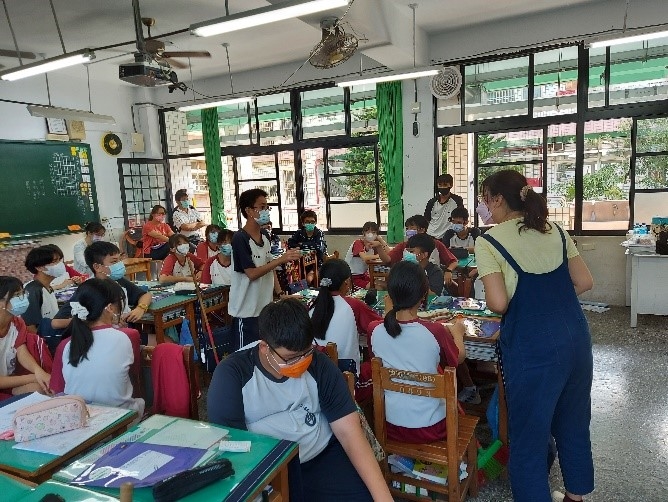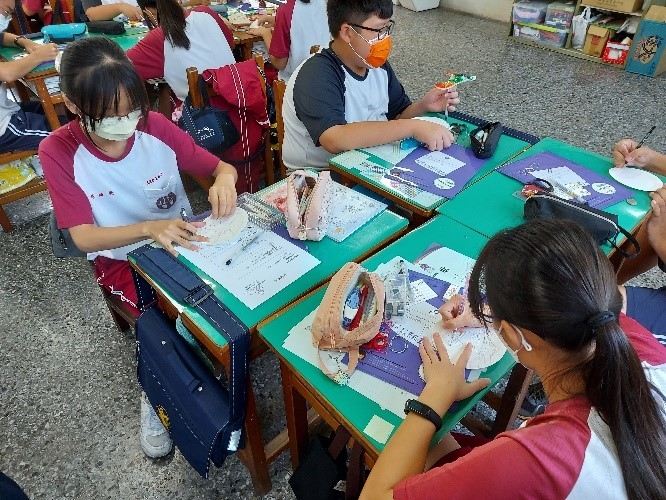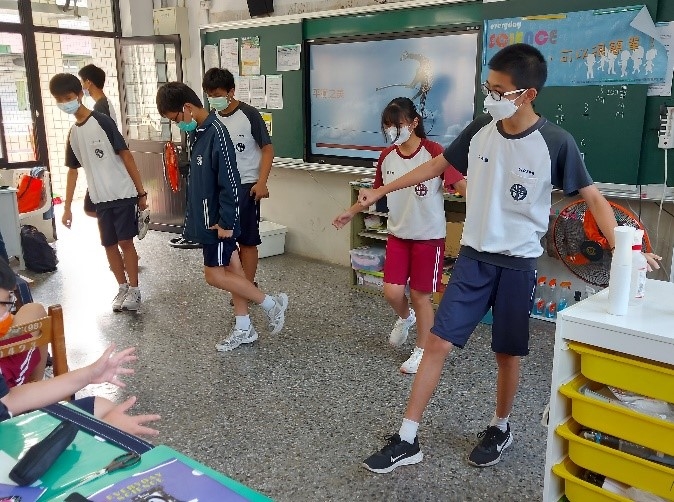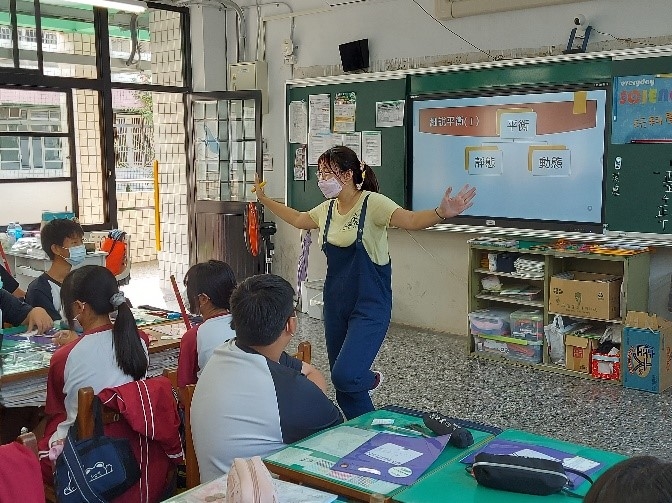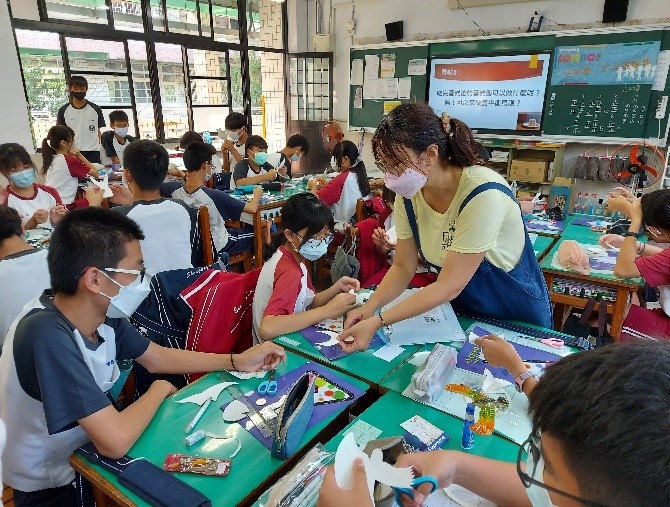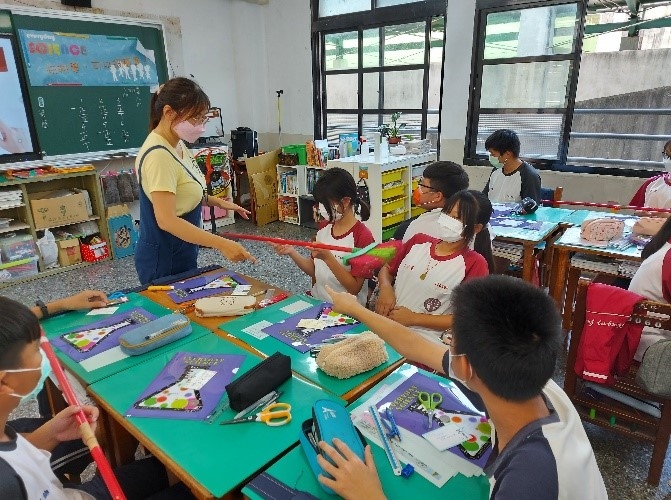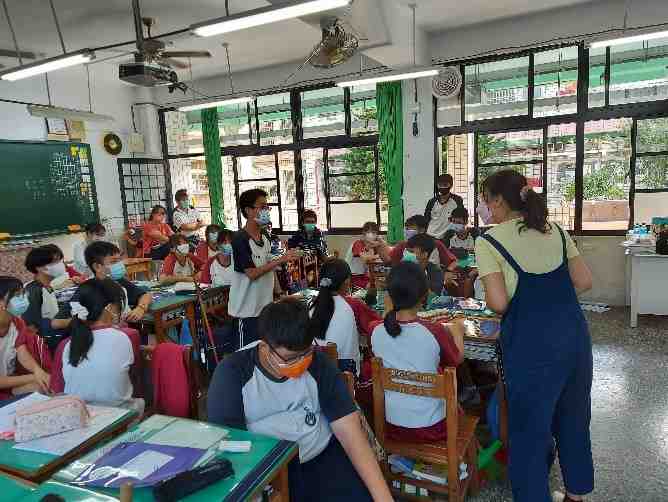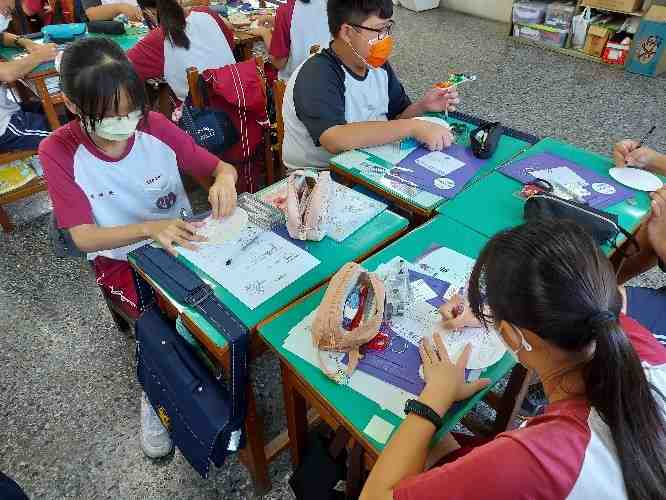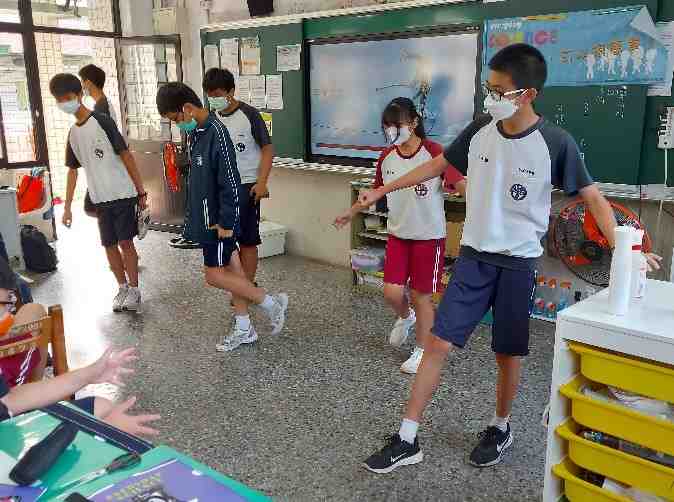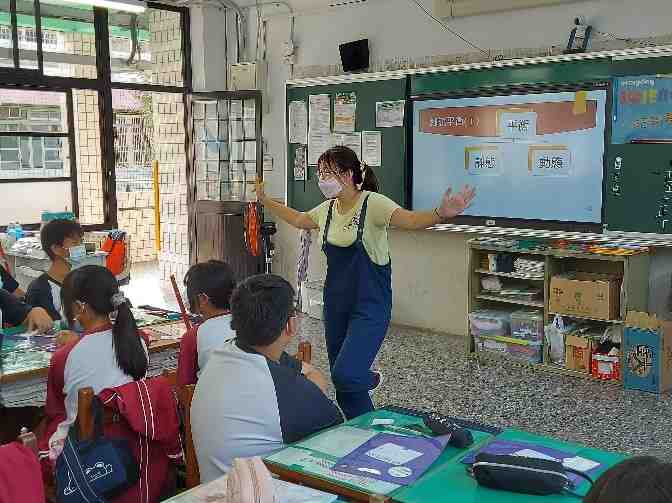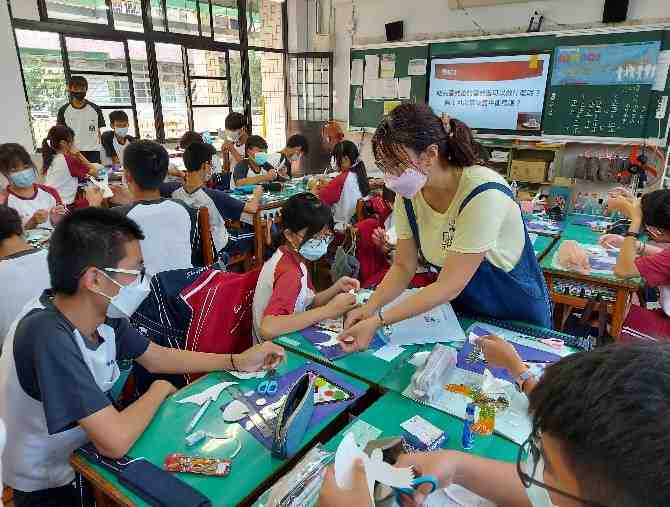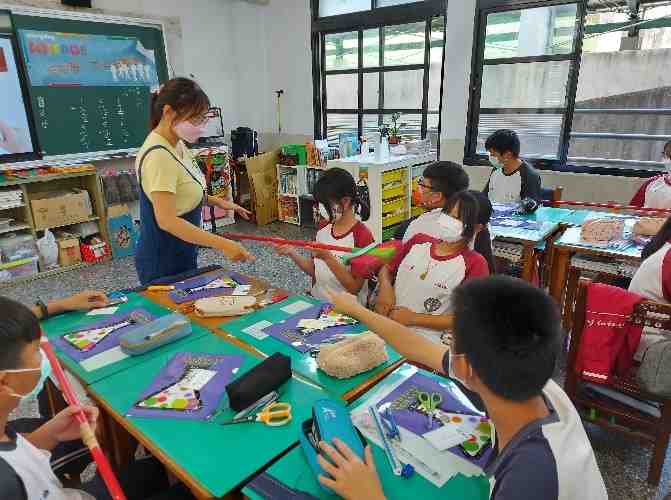Highlights
- Home /
- Highlights /
- Non-urban and non-mountainous school science education activities.
Non-urban and non-mountainous school science education activities.
 Science Communication
Science Communication
Through hands-on experience, students can understand the meaning of the center of gravity and lever balance, and understand the basic principles involved. The four main axes of the course are: arousing attention, relevance, building confidence, and gaining satisfaction, in order to motivate students to learn. Students are interested and curious when they are engaged in hands-on activities, and have a positive expectation for future learning. The course ends with the creation of a balance bird, which utilizes the two physical phenomena discussed in the course. The first is the principle of leverage, which uses the combined moment of the two wings and the three points on the tail (force point and resistance point) to obtain balance (using the bird's beak as the fulcrum). The second is the balance of the center of gravity. In addition to finding the fulcrum, it also uses the characteristic that when the horizontal position of the object's center of gravity is below the object, the center of gravity will move below the fulcrum. When an external force is introduced, it will return to its original position. In the creation of a balance bird, students can directly experience the combination of science, mathematics, and engineering, and cultivate their creativity and design and production abilities.
Activity Goals aligned with SDGs Projects

Goal
Public Engagement
Type of event
Experimental Demonstrations
Organizer
National Changhua University of Education Science Education Center
Event Audience
Junior high and elementary school teachers.
Contact
Telephone Number
04-7232105#3121
boxster@cc.ncue.edu.tw
Result
Through experience and hand -to -hand, students can understand the meaning of geometric focus and leverage balance, and understand the basic principles, from causing attention, personal correlation, establishment of confidence, and gaining satisfaction as the four major axes to motivate students to learn motivation. Students are interested and curious, and have positive expectations for future learning. The course finally made a balanced bird's end, and the balance bird used two physical phenomena discussed in the course. The first is the principle of leverage. The torque of the combination of the two wings and the three points of the tail (the force of force and the resistance point) is zero (with bird's mouth as a fulcrum). The second type is the balance of gravity. In addition to looking for a fulcrum, when the center of gravity of the object is under the object of the object, the center of gravity will move directly below the fulcrum of the object. When the external force is involved, the characteristics of the position will be attributed. In the production of balanced birds, students can directly experience the combination of science, mathematics and engineering, and cultivate students' creativity and design and production ability.
Number of Participants29人
Featured events
Contact Us
- Tel: 02-7749-6818
- Email: iybssdtw@gmail.com
Adviser

自然科學及永續研究發展處
Organizer
國立臺灣師範大學科學教育研究所、自然科學及永續研究推展中心、國立成功大學材料科學及工程學系、台灣物理學會、中國化學會
Co-organizer
中央研究院永續科學中心、中原大學物理學系、中華民國數學會、行政院原子能委員會、財團法人國家實驗研究院國家高速網路與計算中心、財團法人國家衛生研究院、高雄市政府教育局、國立中央大學科學教育中心、國立中正大學科學教育中心、國立成功大學科學教育中心、國立自然科學博物館、國立東華大學科學教育中心、國立科學工藝博物館、國立海洋生物博物館、國立海洋科技博物館、國立高雄大學科學教育中心、國立高雄師範大學、國立清華大學跨領域科學教育中心、國立彰化師範大學、國立臺灣大學科學教育發展中心、國立臺灣科學教育館、國家衛生研究院、淡江大學科學教育中心、逢甲大學綠能科技暨生技產業發展研究中心、臺北市政府教育局、臺灣永續棧、臺灣海洋聯盟、臺灣港務股份有限公司

